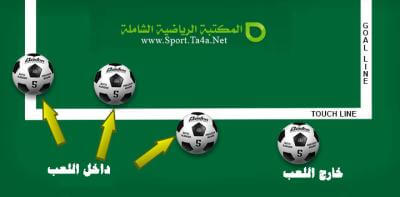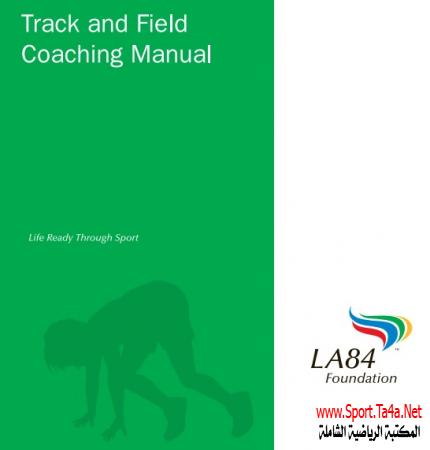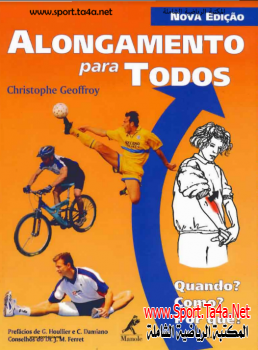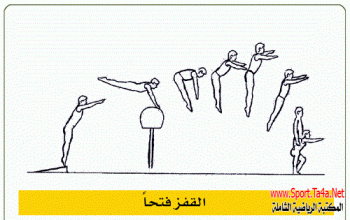Ball Evolution
Ball Evolution
3000 Years Ago
Who knows when the game began? Kicking is a fairly instinctive activity so no doubt Stone Age man gave a rock or bone the occasional thump with his foot and then perhaps one day someone kicked it back and it all began there.
However, the first indications of an early formal form of football date back 3,000 years to Ancient China. A game played with a ball of animal skins stuffed with hair or feathers was kicked between poles some 10 metres high and was most likely used for military training. By 50AD, the game was named tsu chu and early records compare the round ball and square goal to Yin and Yang, the ancient symbols of harmony.
 The Greeks and Romans were the greatest exponents of games and built arenas all over their empire and staged everything from chariot racing to gladiatorial combats where serious injury or death were taken as a matter of course and all part of an enjoyable entertainment. Kicking a ball seems tame in comparison, nevertheless there are indications that they did play a type of football, too. In the case of the Greeks it was called episkyres and the Romans harpustum - but both were mainly ball-carrying games.
The Greeks and Romans were the greatest exponents of games and built arenas all over their empire and staged everything from chariot racing to gladiatorial combats where serious injury or death were taken as a matter of course and all part of an enjoyable entertainment. Kicking a ball seems tame in comparison, nevertheless there are indications that they did play a type of football, too. In the case of the Greeks it was called episkyres and the Romans harpustum - but both were mainly ball-carrying games.
Harpastum is taken from the Greek word Harpazein to seize. The ball was small, about the size of a grapefruit, and hard, not least because it was stuffed with sand. Play would take place on a marked-out pitch with each player taking a position on the field as today and teams probably consisted of 12 players. The game itself was more like rugby with more throwing than kicking and required considerable agility. The rules, it appears, involved a sort of inverted form of football with the objective being to keep the ball behind one’s own half of the centre line and not allow the opponents to get it. Goals were scored if the ball hit the ground.
The Vikings are reported to have kicked the heads of their enemies about which was not very pleasant behaviour but the somewhat more civilised societies such as the Japanese, Persians, Egyptians, Assyrians and North American Indians all played forms of ball games. The Aztecs in Mexico developed their own kicking game which played with a stone covered in a thick coating of gum. The game known as tlatchi was played between two seven-man teams and was a very important cultural activity. Games were even played in purpose-built stadia and huge sums of money gambled on the results.
The whole essence of football is its most simple implement - the ball. And it has to be a particular type of ball, too, with the ability to fly through the air as directed by the player and - most importantly - to bounce predictably. It was really only the development of the bouncing ball and the sheer fun of kicking it in a wide variety of ways which has made football the world’s most popular and successful game
The Middle Ages
It wasn’t until the early Middle Ages, when the first bouncing balls were constructed, that the game became a little more like the football we know today.
J.J. Jusserand, an authority on both French and English mediaeval history, maintains that mass football came to England with the Norman Conquest in 1066, since the Normans played many games for relaxation and entertainment.
Certainly, the French, and in Brittany in particular, were playing a form of mass football in the early middle ages. It was known as ‘La Soule’ or ‘Choule’ but the origins of the name are not clear. It could come from ‘sol’ meaning sun, or ‘solea’ meaning sole of the boot, or even ‘choler’ to kick.
The ball itself was generally solid, made of leather or wood and often filled with hair or moss and the aim was to score a goal - which could be a stream or a tree or a wall - by hitting it with the ball.
Hundreds of men often took part, there were no real rules and it usually turned into a mass combat with no holds barred. Such was the frenzy that a trail of battered and bleeding bodies was often left in the wake of the scrum. It is claimed that, on one occasion, men drowned as they frantically chased the ball into the sea during a game and, on another, 40 men were said to have drowned in a pond at Pont l’Abbe. Such was damage to individuals that more than one French king banned the game.
 |
Mass football probably came to England with the Normans. This steel engraving on 1835 shows ‘La Soule’ which was a violent form of football played in Normady and Brittany in Mediaeval times. Illustration courtesy of the National Football Museum, Preston, UK |
Mass football probably came to England with the Normans. Mobs of apprentices played a crude form of fooball through the streets of Mediaeval London - a boisterous activity highly unpopular with the rest in the city’s inhabitants! Vestiges of this mob game are still around today and can be found, for example, in th Calcio played in Florence.
 |
In Medieval times, footballs were made from anything that could be kicked. This early leather wine carrier served the purpose very well. |
 |
The Ashbourne ball, used in the town’s annual Shrovetide game, is made especially each year and highly-decorated. But after a day of being kicked from one end of the mile-long ‘pitch’ to the other it is usually very battered |
In England, mediaeval apprentices played a crude form of football through the streets of towns and cities usually using home-made balls such as leather wine bottles filled with something like cork shavings. These gangs of youths tearing through city streets kicked, punched, carried and generally forced the ball towards a goal. In England, too, the monarchy often tried to stop such activities and in 1365, King Edward III decided to ban football for military reasons - since the troops preferred it to fighting or even practising their archery.
At some unknown point someone discovered that inflated pigs’ bladders were very kickable and bounced extremely well and these were incorporated into many games. It is not clear how the bladder was inflated but there is evidence at the time of simple pumps being used to force air into the ‘ball’. If the bounce was entirely unpredictable because of the shape of the bladder, then that all added to the fun. The trouble was the ferocity and violence of these mob games often caused such a ball to burst. So the balls began to be encased in leather to give them strength.
The game continued to flourish. On Shrove Tuesday and other religious festival days in many English and Scottish towns, football became a tradition and mobs of up to 500 rampaged through the streets leaving trail of damage to property and numerous broken limbs and black eyes. It wasn’t so much a game of football more of an excuse for a mass fight. There were even a few deaths! In fact, today’s so-called “football hooliganism’ bears considerable resemblance to yesterday’s game of football!
Vestiges of this mob game are still around today and can be found, for example, in the Calcio played in Florence in Italy Italy and the Shrovetide Football in Ashbourne in Derbyshire in England. The Ashbourne ball is much bigger than a normal football. It is filled with cork and is beautifully painted at the start of the match but, sadly, this is artistry is much kicked and scuffed off the surface by the end of the day.
The Oldest Ball
 The oldest leather football in existence is probably over 450 years old and was found hidden in the rafters above Mary Queen of Scots’ bedroom in Stirling Castle in Scotland as recently as 1999. The ball itself was constructed of a pig’s bladder with a grey leather casing sewn around it. The Queen is understood to have thrown the ball from her balcony at the start of matches between the staff of the royal household and soldiers. The matches were generally free-for-alls between dozens of men and probably bear more relation to modern rugby than to association football.
The oldest leather football in existence is probably over 450 years old and was found hidden in the rafters above Mary Queen of Scots’ bedroom in Stirling Castle in Scotland as recently as 1999. The ball itself was constructed of a pig’s bladder with a grey leather casing sewn around it. The Queen is understood to have thrown the ball from her balcony at the start of matches between the staff of the royal household and soldiers. The matches were generally free-for-alls between dozens of men and probably bear more relation to modern rugby than to association football.
No one is sure how the ball came to be jammed in the rafters but there is a strong possibility that it stuck there having been kicked through the open window. A poem written in the Scots dialect in 2001 by James Robertson tells the tale as he imagines it happened:
The ball from Stirling Castle which Mary Queen of Scots allegedly threw from her boudoir into the courtyard below to start a game of football between the troops garrisoned there.
Association Football
The game of football spread from schools to universities and then to ‘Old Boys’ teams (former school pupils) and then clubs. Until this time pupils from the same school had only been able to play each other because all the rules were different for each establishment. But, at this point, teams began to get together to try and form some kind of universal rules so that the different teams could actually play each other, too.
In 1848, many of those public schoolboys who had been to Eton, Harrow, Westminster, Charterhouse, Shrewsbury and the like got together to set out a common form of rules so that they could ‘associate” or play together. They were known as the Cambridge Rules and consisted of 14 points, many of which were different from today’ Laws of the Game. For instance, a player could not catch a ball but he could stop it with his hands and was offside if he was in front of the ball.
In 1857, Sheffield Wednesday, the first football club that was not allied to a school or university, was formed and it, too, developed its own set of rules which included the strange fact that players had to wear coloured caps to identify the two teams. This must have made heading the ball a somewhat unreliable tactic!
However, such was the increasing popularity of the game that, on 26th October 1863, 11 teams got together to form the Football Association and develop a set of uniform rules. They included some famous names still in existence today in the English Football League - Notts County, Sheffield Wednesday and Preston North End to name but three. This is probably the most significant date in the history of the game and is why the FA has the honour of being the only football association in the world which does not have its country’s name in its title.
At this time, there were no specifications about the ball itself. In fact, the first time that a standard-sized ball seems to have been specified was for a representative game between the London Football Association and Sheffield Association in 1866, when it was stated that a ‘Lilywhite’s Number 5’ must be used. Later, it was proposed that a fixed size of ball should be used for the FA’s Challenge Cup Competition. Again, the general agreement was that the Lillywhite’s Number 5 should be used.
Eventually, the rule for the FA Challenge Cup became that the ball should have average circumference of not less than 27 inches (68.5 cm) and not more than 28 inches (71 cm). This rule then became the norm for all games in 1883. A standard weight of from 12 to 15 ounces (340 to 425 grammes) in 1889. This was changed again 1937 to become 14 to 16 ounces (397 to 453 grammes).
The Popular Game
Life for working men up to the 19th century didn’t leave much time for sport. People worked six days a week and were expected to go to church on Sunday and certainly not indulge in any boisterous activity on such a holy day.
But the industrial revolution in England led to a change in the way ordinary people lived their lives. New machinery was being used on the land, so farming was becoming less labour-intensive but, at the same time, machines were being developed for manufacturing and thousands of people flocked from rural lives into the cities to work in the factories.

Factory work was hard, dull and repetitive but generally work finished on Saturday lunchtime. The men needed a release from the drudgery of their weekday work and so football became the ideal outlet. And as the game spread fast in the latter part of the 19th century, leagues were formed and the need for equipment, the ball in particular, became ever greater.
By the 1870s professionalism had begun to creep into the game, albeit illegally, when a Scotsman called J.J. Laing admitted he was being paid by Sheffield Wednesday. By 1885 the FA decided that it had to do something about the increasing practice of under-cover payments so they made it official but with such restrictions on transfers between clubs and on where a player might live that players were left with little bargaining power. But nevertheless the beginnings of the professional game had been born.
References
 التعليقات: 0
التعليقات: 0
GSSA Recreational Soccer
GSSA Recreational Soccer Age Appropriate Soccer Skills Passers (6 & 7) Simple inside foot passing Simple inside foot trapping Simple dribbling Simple throw-in Simple shooting Rules Handball No Goalkeeper...
قانون كرة القدم : مادة (9) الكرة في اللعب وخارج اللعب
قانون كرة القدم : مادة (9) الكرة في اللعب وخارج اللعب الكرة خارج اللعب: تعتبر الكرة خارج اللعب عندما: * تجتاز الكرة بكاملها خط المرمي أو خط التماس سواء على الأرض أو في الهواء. * عندما يوقف الحكم اللعب. الكرة في اللعب: تعتبر الكرة...
Soccer Strength Training and Conditioning
Soccer Strength Training and Conditioning Soccer is a game that is extremely demanding and is dependent upon many different athletic qualities. Speed, agility, power, quickness, flexibility, strength, and aerobic and anaerobic...
مراحل تطور كرة القدم
مراحل تطور كرة القدم كرة القدم هي رياضة جماعية تُلعب بين فريقين يتكون كل منهما من أحد عشر لاعباً بكرة مُكوَّرة. يلعب كرة القدم 250 مليون لاعب في أكثر من مائتي دولة حول العالم، فلذلك تكون الرياضة الأكثر شعبية وانتشاراً في العالم....
رسالة الموقع
نعتذر عزيزي مجموعة الـ الزوار غير مسموح لها باستخادم خاصية التعليقات .فضلاً قم بالتسجيل لتتمكن من التعليق على المواضيع
الموضوعات الأكثر مشاهدة
الكلمات الرئيسية
pdf الأداء الإنسان البحث البدنية التدريب التربية الجسم الحركة الحركي الحركية الرياضة الرياضي الرياضية العضلات العضلية الفرد القدم القلب القوة الكتاب الكرة اللاعب اللاعبين المدرب المهارات تحميل تدريب زيادة كتاب
| « أبريل 2024 » | ||||||
|---|---|---|---|---|---|---|
| أحد | أثنين | ثلاثاء | أربعاء | خميس | جمعة | سبت |
| 1 | 2 | 3 | 4 | 5 | 6 | 7 |
| 8 | 9 | 10 | 11 | 12 | 13 | 14 |
| 15 | 16 | 17 | 18 | 19 | 20 | 21 |
| 22 | 23 | 24 | 25 | 26 | 27 | 28 |
| 29 | 30 | |||||



















